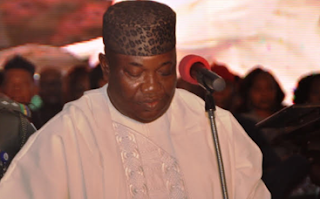BUSINESS
Bad loans rising, dollar scarcity to continue — CBN
The scarcity of foreign exchange will remain challenging in the second half of 2016 due to low oil prices, which may push up credit risks for commercial banks as naira weakness makes loans harder to service, the Central Bank of Nigeria has said.
In its half-year Financial Stability Report, the CBN said the move to a flexible exchange rate regime had led to a sharp fall in the naira and contributed to the decline in asset quality for the banking sector.
“Although the outlook for the rest of the year appears to be challenging, the current measures put in place … are expected to minimise the impact of shocks to the domestic economy,” the report said.
The CBN had floated the naira in June to conserve the external reserves, resolve a chronic dollar shortage, and lure foreign investors who fled as a slump in oil prices pushed the economy into its first recession in 25 years.
Dollar scarcity has persisted after the 16-month-old naira peg of 197/dollar was lifted, however, frustrating businesses which need dollars to pay for imports.
The naira has weakened to as low as 490 per dollar on the black market in recent weeks while holding firm at around 305 on the official market, supported by central bank interventions, Reuters reported.
The National Bureau of Statistics said on Wednesday that the economy was likely to shrink by 1.3 per cent in 2016, a sharp downward revision of its estimates prompted by the naira’s fall after dollar peg was dropped.
The CBN Governor, Mr. Godwin Emefiele, told depositors and investors not to panic about the state of the banking system, saying he was on top of the economic crisis.
The regulator said credit risk could rise into the second half of the year due to higher loan charges and debtors’ inability to service dollar borrowing, particularly oil and gas loans.
“The increasing quantum of non-performing loans posed a major concern for regulators in the review period,” the CBN said on Wednesday, adding that it had enhanced supervision of loans to the oil and gas sector and the currency market.
Non-performing loans are expected to rise in the second half, after they hit 11.7 per cent in the first half, above the CBN’s five per cent limit, according to the CBN.
The NPLs stood at 5.3 per cent at the end of last year.



Comments
Post a Comment